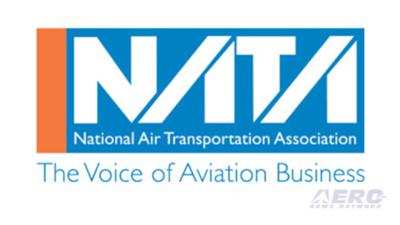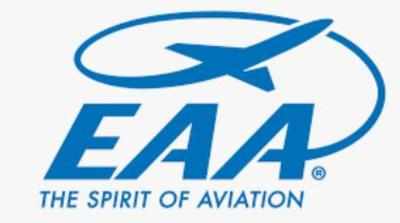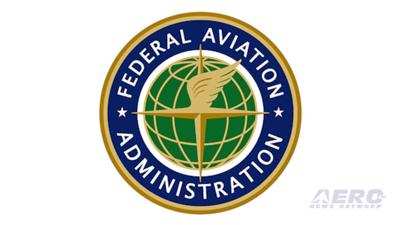A Call to Action
During the Federal Aviation Administration’s 15 March 2023 Safety Summit, general aviation (GA) industry leaders participated in both the opening public session and a closed-door breakout session for purpose of discussing the challenges by which the general aviation industry is currently faced and determining means by which to improve the safety of GA operations.

The public session was opened by controversial Department of Transportation Secretary Pete Buttigieg, broadly-favored FAA Acting Administrator Billy Nolen, and National Transportation Safety Board (NTSB) Chair Jennifer Homendy. The ensuing panel discussion comprised, in part, input from National Business Aviation Association (NBAA) President and CEO, Ed Bolen, former NTSB Chair Robert Sumwalt, and Acting FAA Administrator Nolen. During subject discussion, Mr. Bolen emphasized GA’s importance, setting forth that the sector is the primary training ground for pilots and aircraft technicians. Mr. Bolen stated also that most safety technologies originate in general aviation operations.
An afternoon closed-door GA breakout session was led by General Aviation Manufacturers Association (GAMA) President and CEO Pete Bunce and FAA Deputy Executive Director of Accident Investigation and Prevention for Aviation Safety Warren Rudolph. The session was actively participated in by numerous government and industry leaders representing organizations the likes of the Aircraft Electronics Association (AEA), the Aircraft Owners and Pilots Association (AOPA), the Commemorative Air Force (CAF), the Experimental Aircraft Association (EAA), the FAA, the Flight School Association of North America (FSANA), the Helicopter Association International (HAI), the International Council of Air Shows (ICAS), the National Association of Flight Instructors (NAFI), the National Air Transportation Association (NATA), the National Association of State Aviation Officials (NASAO), the NBAA, the NTSB, and more.

Over the past decade, the GA industry has strongly emphasized the advancement and improvement of aviation safety which—taking into account the recent and significant reduction in aircraft accident rates—has proved effective. GA stakeholders outlined means by which to continue building upon the prevailing safety trend and provided insights vis-à-vis the GA community’s engagement with regulators and avenues by which that engagement may benefit the entirety of the aviation industry.
During the session, NTSB Director of the Office of Aviation Safety Tim LeBaron discussed the pressing need for better collaboration between the FAA, engine manufacturers, and the NTSB to improve the gathering of data germane to loss-of-engine-power investigations with the larger goal of decreasing the number of such events. Mr. LeBaron opined that the acquisition of better data ought compel the General Aviation Joint Safety Committee (GAJSC) to explore means by which to decrease the rate of such accidents.
Richard McSpadden, Senior Vice President of the AOPA’s Air Safety Institute, asserted GA safety had benefited from the NTSB/FAA collaboration to accelerate accident investigations and commend reports immediately to the General Aviation Joint Safety Committee (GAJSC) and U.S. Helicopter Safety Team (USHST) for analysis. Mr. McSpadden discussed the co-dependence of the five key elements of GA safety—culture, knowledge, training, proficiency, and equipment—and emphasized the need to evaluate the cost effectiveness of the FAA’s WINGS program and the adverse effects of the post COVID experience and knowledge drain across the whole of the GA industry.
Vice President of EAA Government Affairs Sean Elliott noted that the significant reduction of fatal accidents in the Experimental-Amateur Built aviation community over the past 12 years has been achieved with little to no new regulation—succeeding, rather, by dint of outreach and policy enhancements enacted collaboratively with industry stakeholders through programs such as 2014’s Additional Pilot, and 2018’s Flight Test Manual initiatives. Mr. Elliott stated, also, that the GA industry is in need of additional pathways by which to imbue GA cockpits with safety-enhancing tech.

HAI President and CEO James Viola called for the restoration of full funding for the FAA’s weather camera program—the preliminary budget of which has been targeted for cuts. The need to prolong and expand the preflight planning, situational awareness, and aeronautical decision-making technology inherent the weather camera program, particularly in areas unable to access traditional weather reporting sources, was echoed by numerous GA industry representatives. Additionally, Mr. Viola called for improved unity and collaboration with Advanced Air Mobility (AAM) and drone stakeholders, and proposed merging the USHST and Drone Safety Team.
ICAS President and CEO John Cudahy discussed safety initiatives within the U.S. air-show community, including the air-show business’s compulsory and comprehensive adoption of Safety Management Systems (SMS); a longstanding collaboration between the FAA and ICAS on a successful pilot evaluation program; and a new data collection/analysis program. Mr. Cudahy stated emphatically that the air-show community has demonstrated that SMS can be used successfully in atypical applications and circumstances.
CAF CEO and President Hank Coates spoke about the aftermath of the tragic B-17 and P-63 midair accident and the recent launch of the Association of Professional Warbird Operators. Subject organization seeks to promote professionalism, thereby engendering education, standardization, and safety methodologies conducive to the fostering of sustainability, the mitigation of risk, and the preemption of unnecessary and irresponsibly contrived regulations.
NASAO CEO Greg Pecoraro spoke of technology’s value as a supplement to operational safety, citing the importance of expanding the FAA’s weather camera program and implementing wider use of remote tower systems. Mr. Pecoraro noted that broadened introduction of the aforementioned technologies would significantly increase awareness of operational conditions at GA airports.
NATA COO Keith DeBerry applauded the FAA’s efforts to support development and implementation of SMS within the part 135 community, the agency’s continued focus on runway incursions, and its efforts to address workforce issues across the entirety of the aerospace sector. NATA believes—albeit speciously—that increased prevalence of SMS programs will benefit the entirety of the National Airspace System.

GAMA Vice President of Operations, Safety, and Security Jens Hennig, who organized the GA breakout session, underscored the important role technology plays in providing improved situational awareness for pilots—including airborne avionics and ground equipment.
Additionally, summit attendees emphasized the importance of extant voluntary reporting schemes such as the Aviation Safety Reporting System (ASRS) and Aviation Safety Action Program (ASAP), which help identify systemic vulnerabilities.
At the conclusion of the session, GA leaders re-emphasized the tremendous safety benefit of continued deployment of weather cameras and reiterated the need to actively strengthen the workforces of both the FAA and the GA industry. The acute shortage of Designated Pilot Examiners (DPE) in many parts of the country and the need for standardization within the DPE ranks was presented as a matter of vital importance to the GA community.
The opening session of the FAA Safety Summit can be viewed at https://www.youtube.com/watch?v=i_ap93YLFRU.
 ANN's Daily Aero-Term (04.24.24): Runway Lead-in Light System
ANN's Daily Aero-Term (04.24.24): Runway Lead-in Light System ANN's Daily Aero-Linx (04.24.24)
ANN's Daily Aero-Linx (04.24.24) Aero-FAQ: Dave Juwel's Aviation Marketing Stories -- ITBOA BNITBOB
Aero-FAQ: Dave Juwel's Aviation Marketing Stories -- ITBOA BNITBOB Classic Aero-TV: Best Seat in The House -- 'Inside' The AeroShell Aerobatic Team
Classic Aero-TV: Best Seat in The House -- 'Inside' The AeroShell Aerobatic Team Airborne Affordable Flyers 04.18.24: CarbonCub UL, Fisher, Affordable Flyer Expo
Airborne Affordable Flyers 04.18.24: CarbonCub UL, Fisher, Affordable Flyer Expo






